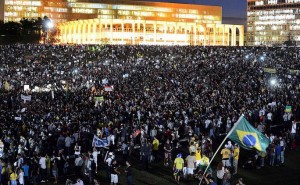The Rise of the Global Middle-Class

The French, Bolshevik and Chinese Revolutions were all led by discontented middle-class individuals, even if their ultimate course was later affected by peasants, workers and the poor. The 1848 “Springtime of Peoples” saw virtually the whole European continent erupt in revolution, a direct product of the European middle classes’ growth over the previous decades.
While protests, uprisings and occasionally revolutions are typically led by newly arrived members of the middle class, the latter rarely succeed on their own in bringing about long-term political change. This is because the middle class seldom represents more than a minority of the society in developing countries and is itself internally divided. Unless they can form a coalition with other parts of society, their movements seldom produce enduring political change.
Francis Fukuyama’s Saturday essay in WSJ examined the rise of the new global middle class and what they’re doing to challenge the status quo. “It would be a grave mistake to think, ‘It can’t happen here,’” Fukuyama, a fellow at Stanford University’s Freeman Spogli Institute for International Studies, warns.
Photo: Semilla Luz
Support The Billfold
The Billfold continues to exist thanks to support from our readers. Help us continue to do our work by making a monthly pledge on Patreon or a one-time-only contribution through PayPal.
Comments